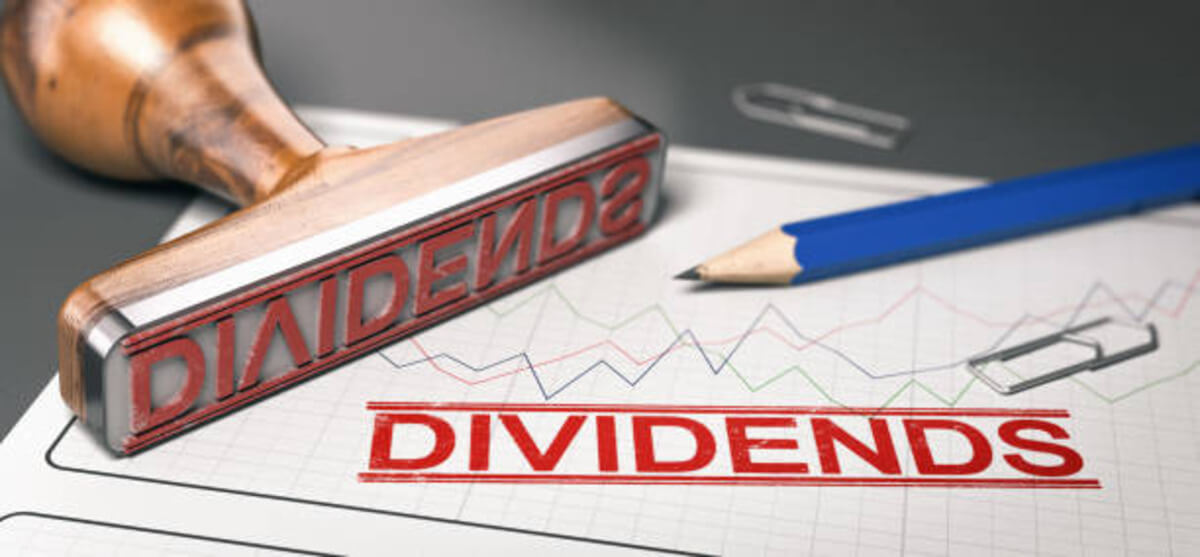Stock Dividends Explained
Stock dividends are essential in the financial world because they provide a unique manner for corporations to transfer earnings to their shareholders. In this section, we will provide a thorough introduction to stock dividends, covering the fundamentals and how they work within the financial market framework.
Understanding the Fundamentals of Stock Dividends
Stock dividends are a type of payment a firm provides to its shareholders. They are also known as bonus shares or scrip dividends. Instead of cash, the corporation distributes new shares of stock to current shareholders. A shareholder’s bonus shares are usually proportional to the number of shares they already possess.
Advertisement
Also, check out Asset Management: All You Need to Know.
Understanding Stock Dividends
When a corporation declares a stock dividend, it specifies the dividend rate as a percentage. A 10% stock dividend, for example, means that for every ten shares an investor has, they will receive one more share. Assume a shareholder owns 100 shares of a corporation with a 10% stock dividend. In that instance, they will receive 10 additional shares, bringing their total to 110.
The Benefits of Stock Dividends for Businesses
Companies opt to pay out stock dividends for a variety of reasons. One significant advantage is that stock dividends allow corporations to save money while still rewarding shareholders. Companies can shift their available funds to other areas, such as reinvestment in the firm or debt repayment, by issuing extra shares instead of cash.
Advertisement
Shareholder Benefits
Stock dividends provide various advantages to owners. For starters, they allow them to raise their ownership stake in the company without having to contribute extra dollars. Shareholders’ overall ownership percentage in the company grows when they get more shares through stock dividends. Furthermore, stock dividends might be interpreted as an indication of a company’s financial health and positive outlook. Companies that pay out stock dividends regularly may be seen as financially solid and confident in their prospects.
The Distinction Between Stock Dividends and Cash Dividends
It is critical to differentiate between stock dividends and cash dividends. While stock dividends involve the issuance of extra shares, cash dividends are paid to shareholders in cash. Cash dividends are increasingly common and are paid directly to shareholders’ accounts from a company’s profits.
Legal Obligations and Stock Dividends
When issuing stock dividends, corporations must adhere to legal requirements and laws. These regulations may differ based on the jurisdiction and the type of shares held by the corporation (common or preferential).
Types of Stock Dividends
In this part, we will look at the many forms of stock dividends that corporations can issue. Understanding how stock dividends vary can give investors with useful information about the company’s financial actions and how these distributions may affect shareholders.
Common Stock Dividends
The most prevalent sort of stock dividend issued by firms is regular stock dividends. In this situation, the firm declares a dividend rate, which is commonly indicated as a percentage, and distributes extra shares to existing shareholders in proportion to their current holdings. For example, if a corporation declares a 5% regular stock dividend and a shareholder holds 200 shares, the dividend will be ten shares (5% of 200).
Minority Stock Dividends
Small stock dividends are comparable to ordinary stock dividends except that they are paid at a lower rate. A tiny stock dividend is defined differently in each jurisdiction, but it is often less than 20% of the company’s outstanding shares. Small stock dividends, unlike ordinary stock dividends, may impose additional reporting and transparency requirements on the corporation.
Excessive Stock Dividends
Large stock dividends, on the other hand, are paid at a higher rate than regular stock dividends. The precise criterion for classifying a dividend as big varies, although it is typically thought to be greater than 20% of the company’s outstanding shares. Large stock dividends may pique the interest of investors and signal substantial changes in the company’s financial status.
Dividends on Real Estate
Companies may choose to distribute property dividends rather than cash or extra shares in specific instances. Property dividends entail the direct distribution of assets, products, or other tangible commodities to shareholders. These assets could include the company’s own products, subsidiary shares, or other investments. Property dividends are more difficult to implement than stock dividends since the corporation must assess the fair value of the assets distributed.
Share Splits
Stock splits, while not strictly stock dividends, are worth discussing in this context. A stock split is a corporate move that raises a company’s number of outstanding shares by splitting the current shares into a larger number of smaller shares. This action has no effect on the company’s overall market capitalization or shareholder proportional ownership. Stock splits are typically used to make shares more inexpensive and to boost liquidity.
Dividends versus Stock Splits
Though both stock dividends and stock splits increase the number of shares held by shareholders, they are independent actions. Stock dividends entail distributing extra shares as a type of dividend to existing shareholders, whereas stock splits involve raising the number of shares but altering the price accordingly to preserve the same total market value.
Also, check out the Meaning and Importance of Business Plans.
Reasons for Issuing Stock Dividends
In this section, we will look at why firms choose to pay out stock dividends and how this affects the company’s financial status and shareholder relations.
Protect Cash Resources
One of the key reasons firms choose stock dividends is to conserve cash. Companies can keep more cash on their balance sheets by distributing additional shares rather than cash. This is especially useful during times of economic instability or when the company has to devote capital for expansion, R&D, debt reduction, or other strategic activities.
Financial Health Indicator
The payment of stock dividends can be interpreted as a good indicator of a company’s financial health and confidence in its future prospects. Regular and consistent stock dividend distributions can reflect that the company is profitable and in good financial standing. Stock dividends are frequently viewed by shareholders as an indication of a company’s dedication to shareholders’ interests and long-term success.
Keep Share Price Attractive
Companies can keep their stock price attractive by distributing extra shares through stock dividends. A higher share price can make the company’s stock more enticing to a larger spectrum of investors while also increasing market liquidity. This strategy is especially popular among companies with high share prices, as issuing extra shares via stock dividends can help keep the share price accessible to investors.
Reward Shareholders Without Expenses
Stock dividends allow corporations to reward their shareholders without experiencing immediate financial outflows. This is especially useful when a corporation wants to recognize its shareholders’ loyalty and efforts but lacks the means to pay traditional cash dividends. Stock dividends enable the corporation to share its financial success with shareholders while maintaining its cash reserves.
Increase Shareholder Trust
Stock dividends paid on a regular basis can boost shareholder trust in the company’s financial health and growth prospects. The gesture of distributing more shares to shareholders underscores the company’s commitment to its investors and can foster long-term shareholder loyalty. Increased investor confidence, in turn, may result in a more stable stock price and attract new investors to the company.
Employee Attraction and Retention
Companies may use stock dividends as part of their employee compensation packages in specific situations. Employees have a vested stake in the company’s performance and success if they are given extra shares. This approach links employees’ and shareholders’ interests, pushing employees to work toward the company’s growth and financial success.
How Stock Dividends Affect Shareholders
In this part, we’ll look at how stock dividends affect shareholders. Understanding how stock dividends influence shareholders can provide important insights into the benefits and considerations for investors who receive more shares as dividends.
Increased Stake in Ownership
The increase in ownership stake in the company is one of the key consequences of stock dividends on shareholders. When shareholders receive additional shares as a result of stock dividends, their total number of shares grows in proportion to the dividend rate. Long-term investors may benefit from this growth in ownership because it increases their overall stock position in the company.
Ownership Dilution
While obtaining extra shares via stock dividends might raise a shareholder’s ownership interest, it is important to note that stock dividends can result in a dilution of ownership for existing shareholders. Dilution occurs when the total number of outstanding shares increases, spreading ownership across a greater number of shares. However, because stock dividends are usually distributed in proportion to a shareholder’s current holdings, the proportionate ownership remains constant.
Effect on Share Market Value
Although stock dividends do not immediately affect a company’s market capitalization or the value of its shareholders’ total holdings, they might influence the market value per share. When extra shares are distributed as stock dividends, the overall value of the company remains unchanged, but the number of outstanding shares increases.
As a result, the market price per share is reduced in order to retain the same market capitalization. After the stock dividend is distributed, this adjustment may result in a reduced market price per share.
Shareholder Tax Implications
Stock dividends have tax ramifications that shareholders should be aware of. Stock dividends are often not taxable events in many jurisdictions because there is no actual cash payout. The cost basis of the shares is instead updated to reflect the additional shares received. However, shareholders may still owe taxes when they sell their shares since the altered cost basis affects their capital gains or losses.
Long-Term Advantages for Investors
Stock dividends can provide long-term rewards to investors that use a buy-and-hold strategy. Investors can enhance their interest in the company over time by receiving additional shares at no further expense. This can be especially beneficial if the company has long-term growth and value appreciation.
Investor Considerations
While stock dividends might be advantageous, investors should assess their specific financial goals and investing plans before making stock dividend selections. It is critical to assess whether receiving extra shares is consistent with their portfolio objectives, risk tolerance, and liquidity requirements. Before making investing decisions based on stock dividends, investors should consider the company’s overall financial health, dividend policy, and long-term growth potential.
Tax Implications of Stock Dividends
In this section, we will look at the tax implications of stock dividends for both corporations and individual shareholders. Investors must understand the tax treatment of stock dividends in order to make informed decisions and comply with tax requirements.
Taxation of Stock Dividends for Corporations
Stock dividends are generally not taxable events from the standpoint of the corporation. When a corporation pays out stock dividends, there is no cash outflow because the payout is in the form of extra shares. As a result, the corporation has no realized gain or income, and no tax duty emerges.
Shareholders’ Tax Treatment of Stock Dividends
Stock dividends are taxed differently than cash dividends for individual shareholders. Stock dividends are generally regarded as non-taxable events since they do not entail a cash payment. Instead, the existing shares’ cost basis is changed to reflect the new shares received from the stock dividend.
Stock Dividend Adjusted Cost Basis
When a shareholder receives additional shares as a result of a stock dividend, the total cost basis of their investment is divided equally between the original shares and the new shares acquired. Divide the original cost basis by the total number of shares after the stock dividend to get the updated cost basis per share.
Original Cost Basis / (Number of Original Shares + Number of Additional Shares Received) = Adjusted Cost Basis per Share
Tax Implications of Share Sale
When a shareholder decides to sell some or all of their shares, the adjusted cost basis per share becomes critical. The adjusted cost basis is used to calculate capital gains or losses on the selling of shares.
Selling Price per Share – Adjusted Cost Basis per Share equals Capital Gain (or Loss).
A capital gain is realized by the shareholder if the selling price per share is more than the adjusted cost basis. In the other case, if the selling price per share is less than the adjusted cost basis, the shareholder suffers a capital loss.
Holding Period for Tax Purposes
The tax effects are also affected by the holding duration of the shares. If the stock dividend shares are held for a certain period of time before being sold, they may be eligible for different tax rates, such as short-term capital gains tax or long-term capital gains tax, depending on the holding period.
Tax Professional Consultation
Given the complexity of tax legislation and the unique circumstances of each investor, shareholders must engage with tax professionals to ensure compliance with applicable tax laws and optimize tax planning methods.
Dividend Reinvestment Plans (DRIPs)
Dividend Reinvestment Plans (DRIPs) are a novel technique for investors to maximize the value of stock payouts. In this section, we will look at DRIPs, their benefits, and how they can help investors develop diverse and growth-oriented investment portfolios.
Understanding Dividend Reinvestment Plans (DRIPs)
Dividend Reinvestment Plans (DRIPs) are plans that allow shareholders to automatically reinvest cash dividends into additional shares of the company’s stock. Instead of receiving cash dividends, DRIP participants accumulate fractional shares with each dividend delivery. The additional shares are normally purchased at the time of the dividend distribution at the market price.
DRIP Benefits for Investors
DRIPs provide investors with various benefits, including:
- Compound Growth: By reinvesting dividends, investors can capitalize on the power of compounding. Investors can increase the growth of their investment over time by reinvesting dividends constantly.
- Cost Averaging: DRIPs allow investors to buy more shares at different market prices over time. This dollar-cost averaging strategy helps to smooth out the impact of market volatility and may result in a lower average cost per share.
- Automatic and Convenient: DRIPs reduce the need for investors to manually reinvest dividends because the process is automated by the company or a brokerage platform. This ease of use makes it easier for investors to stick to a disciplined investment approach.
- Fractional Shares: DRIPs allow investors to buy fractional shares, which means that every dollar of dividends is efficiently reinvested, leaving no cash on the table. This function makes certain that all available money is used to develop the investment portfolio.
DRIPs Enabling Diversification
DRIPs are essential for diversifying investment portfolios. Investors receive exposure to other businesses and sectors as dividends are reinvested into new shares of the company’s stock. Dividends from multiple firms can help to a well-rounded and diverse portfolio over time.
Long-Term Growth Prospects
DRIPs can be an excellent approach for long-term investors looking to capitalize on the growth potential of dividend-paying corporations. Dividend reinvestment allows investors to accumulate additional shares, resulting in higher dividend payments in the future. Over time, this cycle of investing can contribute to enormous wealth creation.
Investor Considerations
While DRIPs have various advantages, investors should consider the following:
- Transaction Fees: Some brokerage platforms may impose fees for dividend reinvestment via DRIPs. Investors should consider whether the costs of automatic dividend reinvestment outweigh the benefits.
- Tax Implications: Even though dividends are not received in cash, they are still considered taxable income. Investors should be aware of the tax implications of DRIPs, particularly if the investments are held in taxable accounts.
- Diversification Beyond a Single Firm: While DRIPs can help with stock diversification inside a single firm, investors should not underestimate the necessity of diversifying across companies and sectors in order to minimize overall portfolio risk.
Dividend Reinvestment Plans (DRIPs) provide investors with a valuable tool for maximizing the benefits of equity dividends while encouraging long-term development and diversification. Investors can use automatic reinvestment to leverage the power of compounding and cost averaging to create wealth consistently over time.
DRIPs enable investors to build up shares in dividend-paying firms, assisting in the development of a diverse investment portfolio. When considering DRIPs as part of their investing strategy, investors should carefully examine transaction fees, tax consequences, and the need for broader diversification. In the following sections, we will look at how stock dividends can help you build a well-balanced investment portfolio and the advantages of long-term dividend investing.
Also, check out How to Make Money from ClickBank.
Constructing a Well-Balanced Investment Portfolio with Stock Dividends
In this part, we’ll look at how stock dividends can help you build a well-balanced investment portfolio. Stock dividends can be an important part of a well-diversified and growth-oriented investment strategy, providing investors with potential long-term rewards as well as a source of passive income.
Diversification Is Important in Investment Portfolios
Diversification is a fundamental tenet of wise investing. Investors can minimize portfolio risk and increase the potential for long-term returns by diversifying their assets across asset classes, industries, and geographic locations. Stock dividends help with diversification by allowing investors to accumulate shares in many companies, giving them exposure to a variety of businesses and industries.
Using Stock Dividends to Generate Income
Stock dividends can be a beneficial source of passive income for income-seeking investors. When dividends are reinvested through DRIPs or received as cash, investors can use the money to boost their normal earnings or reinvest it in further investments. Dividend income might be especially appealing to retirees and people seeking financial stability.
Dividend Investing Strategy for the Long Term
Long-term dividend investing is a popular approach among investors looking for consistent growth and income. Investors can develop a portfolio of dividend-paying stocks with the potential to generate stable returns over time by picking companies with a history of constant and growing dividends. Dividend growth stocks, in particular, have a track record of raising dividends year after year, providing the opportunity for compounding profits.
Growth and Income Balance
Stock dividends assist investors to find a balance in their investment portfolios between growth and income. Dividend-paying companies frequently have strong foundations and financial stability, making them good long-term growth potential. Furthermore, dividend income can be reinvested or used for current costs, providing investors with a consistent stream of returns.
Dividend Metrics Evaluation
When putting together a dividend-focused investment portfolio, investors should consider the following dividend metrics:
- Dividend Yield: Dividend yield is calculated by dividing the annual dividend amount by the stock price. It assists investors in identifying stocks with appealing income-generating potential.
- Dividend Payout Ratio: The dividend payout ratio is the percentage of earnings that are distributed as dividends. A sustainable payout ratio shows that a corporation has the financial resources to keep and raise its payouts.
- Dividend Growth Rate: Examining a company’s past dividend growth rate reveals information about its commitment to rewarding shareholders as well as its potential for future dividend increases.
Risk Factors to Consider
While stock dividends can be an important part of an investment portfolio, investors should be aware of the dangers involved. Stock prices, like all investments, can change, impacting the investment’s value. Individual company performance, economic conditions, and market volatility can all have an impact on dividend stability.
Stock dividends are important components of a well-balanced investment portfolio, as they provide the potential for diversification, income creation, and long-term growth. Investors can build a strategy that corresponds with their financial goals and risk tolerance by reinvesting dividends or receiving them as cash.
Understanding important dividend measures and assessing potential risks is critical for dividend investing success. Stock dividends, when intelligently incorporated into an investing portfolio, can help investors achieve their financial goals and create wealth over time.
Key Takeaways and Conclusion
In this section, we will review the essential insights from our discussion of stock dividends and conclude the guide with critical considerations for investors.
Important Takeaways
- Dividends on stock Stock dividends are payments made to current shareholders in the form of additional shares of a company’s stock rather than cash payments.
- Companies give stock dividends to conserve cash resources, communicate financial health, maintain an appealing share price, reward shareholders without cash outflow, build shareholder confidence, and recruit and retain staff.
- Shareholder Impact: Stock dividends raise shareholders’ ownership interest, but they might cause dilution due to the increased number of outstanding shares. Dividends on stock do not affect a company’s overall value, but they do affect the market price per share.
- Tax Implications: In general, stock dividends are not taxable events for both firms and stockholders. When selling shares obtained through stock dividends, shareholders should consider the modified cost basis.
- Dividend Reinvestment Plans (DRIPs): DRIPs allow investors to automatically reinvest dividends, promoting compounding growth, cost averaging, and the development of diverse investment portfolios.
- Building a Well-Balanced Portfolio: Stock dividends help diversify portfolios, generate income, and align with long-term dividend investing plans. Dividend yield, payout ratio, and growth rate are important dividend metrics to consider when evaluating dividend-paying equities.
Final Thoughts
Stock dividends are an important component of an investment portfolio since they provide investors with a variety of benefits and prospects for wealth building. Investors can amass shares in dividend-paying firms by reinvesting dividends through DRIPs or receiving them as income, so encouraging long-term growth and income production.
When adding stock dividends into their investment strategy, investors should carefully examine their financial goals, risk tolerance, and tax implications. A well-balanced investment portfolio that includes dividend-paying equities can contribute to long-term stability, diversity, and capital appreciation.
Remember that stock market investment entails inherent risks, and previous performance does not guarantee future results. When making investing decisions, it is critical to undertake extensive research, speak with financial advisors, and keep a long-term view in mind.
Investors may navigate the financial markets with confidence and make informed decisions to attain their financial goals if they grasp the principles and benefits of stock dividends.
Before you go, check out How to Get Grants for Small Businesses in Nigeria.







One Comment
Comments are closed.